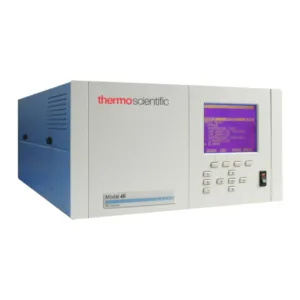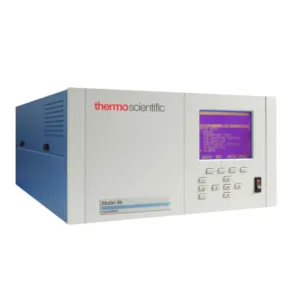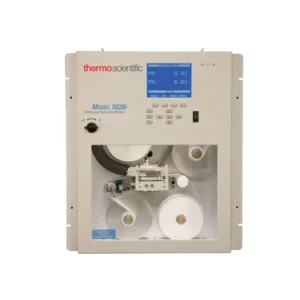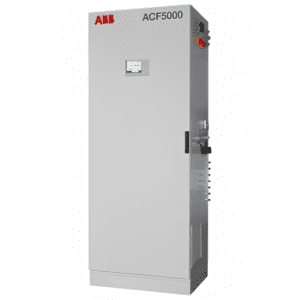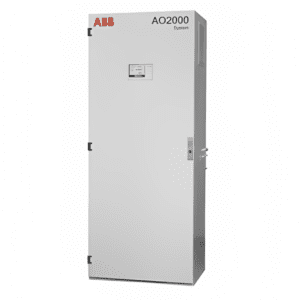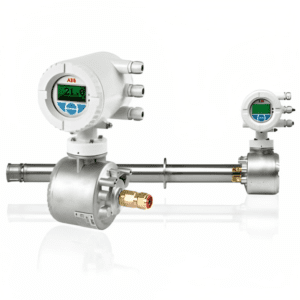Introduction:
In the pursuit of sustainable development and environmental conservation, the control of air pollution emerges as a crucial aspect. Regulatory bodies such as the Central Pollution Control Board (CPCB) and State Pollution Control Boards (SPCBs) play a pivotal role in setting guidelines to monitor and control emissions. In this comprehensive blog post, we will explore the guidelines provided by CPCB and SPCBs for Continuous Emission Monitoring Systems (CEMS) and Suspended Particulate Matter (SPM) monitoring, delving into the intricacies of compliance and environmental protection.
Continuous Emission Monitoring Systems (CEMS) Guidelines:
Understanding CEMS:
Continuous Emission Monitoring Systems (CEMS) are instrumental in real-time monitoring of emissions from industrial sources. The CPCB and SPCBs have laid down comprehensive guidelines to ensure the effective implementation of CEMS. Key aspects include:
- Installation Requirements:
- CEMS must be installed in all industries covered under the emission standards notification.
- Proper location selection for stack monitoring points to represent emissions accurately.
- Parameter Monitoring:
- CEMS should monitor parameters specified in the emission standards, including pollutants like sulfur dioxide (SO2), nitrogen oxides (NOx), particulate matter, and more.
- Continuous monitoring of oxygen levels for combustion efficiency assessment.
- Data Recording and Reporting:
- Real-time data recording and reporting are mandatory, with specified intervals.
- Submission of periodic emission reports to regulatory authorities.
- Calibration and Maintenance:
- Regular calibration and maintenance of CEMS components to ensure accuracy.
- Record-keeping of calibration and maintenance activities for scrutiny.
- Data Validation and Quality Assurance:
- Stringent measures for data validation to ensure reliable and accurate emissions data.
- Implementation of quality assurance procedures to meet standards.
- Audit and Enforcement:
- Periodic audits by regulatory bodies to verify the accuracy of CEMS data.
- Enforcement measures for non-compliance, including penalties and shutdowns.
Components of a Comprehensive Continuous Emissions Monitoring System (CEMS)

- Gas Analyzer:
- The gas analyzer is the core component responsible for measuring the concentrations of specific pollutants present in the exhaust gas stream. Various types of gas analyzers are employed to detect different pollutants, including sulfur dioxide (SO2), nitrogen oxides (NOx), carbon monoxide (CO), and particulate matter (PM). The selection of analyzers is tailored to the emission parameters identified in regulatory standards.
- Data Logger:
- Acting as the brain of the system, the data logger is responsible for handling the collection and processing of information gathered by the gas analyzers. This component includes data logging and storage capabilities, ensuring that emission data is recorded accurately and consistently over time.
- Communication Interfaces:
- Communication interfaces facilitate seamless interaction between different components of the CEMS. These interfaces adhere to specific rules, protocols, and standards governing the format, timing, and sequence of data exchange. Common communication ports include RS232, RS485, Ethernet, or USB, enabling efficient connectivity within the system.
- Data Storage and Reporting:
- The data storage and reporting component plays a crucial role in the organization and presentation of emission data. It ensures that the collected data is reported in a clear and standardized format, meeting the requirements of regulatory bodies such as the Central Pollution Control Board (CPCB) and State Pollution Control Boards (SPCBs).
- By integrating these components, a CEMS can provide accurate, real-time information on industrial emissions, aiding regulatory authorities in assessing compliance with environmental standards. The synergy of these components enhances the overall effectiveness of the system, enabling industries to monitor and manage their environmental footprint responsibly. As technology advances, CEMS components continue to evolve, offering more sophisticated and efficient solutions for emission monitoring and reporting.
Suspended Particulate Matter (SPM) Monitoring Guidelines:
Understanding SPM Monitoring:
Suspended Particulate Matter (SPM) monitoring is critical for assessing air quality and controlling particulate emissions. The guidelines set by CPCB and SPCBs aim to establish standardized practices for SPM monitoring. Key aspects include:
- Sampling Locations:
- Proper selection of sampling locations representative of ambient air quality.
- Consideration of factors such as wind direction and pollution sources in site selection.
- Sampling Duration and Frequency:
- Guidelines specify the minimum sampling duration and frequency to capture variations in pollution levels.
- Continuous sampling during critical hours and specific seasons based on industrial activities.
- Sampler Calibration:
- Regular calibration of samplers to ensure accurate measurement of particulate matter.
- Adherence to calibration protocols provided by regulatory bodies.
- Sample Collection and Analysis:
- Proper handling of collected samples to prevent contamination.
- Analysis of samples in accredited laboratories using standardized methods.
- Data Reporting and Record-Keeping:
- Timely submission of SPM monitoring reports to regulatory authorities.
- Maintenance of records detailing sampling locations, duration, and analysis results.
- Compliance Assessment:
- Periodic inspections by regulatory bodies to assess compliance with prescribed standards.
- Enforcement actions for non-compliance, including fines and legal actions.
Steps for CEMS Connectivity
To align with CEMS compliance according to CPCB guidelines, adhere to the following steps:
- Review your Consent to Operate (CTO) and Consent to Establish (CTE) to understand CPCB and SPCB compliance requirements and the parameters for monitoring.
- Choose a suitable analyzer based on the parameters outlined in your CTO and industry requirements as per CPCB guidelines (Pages 59-72).
- Install the analyzer at designated locations in accordance with CPCB directives (Pages 9-12).
- Identify a service provider for handling data and establishing connectivity with CPCB, SPCB, and other regulatory bodies. Click Here to explore our services.
- The selected service provider will offer technical and software support to retrieve data from the analyzer and establish connections with regulatory bodies.
- The service provider will assist with documentation and coordinate with CPCB and SPCB for a seamless process.
- Upon receiving approval from SPCB and CPCB, the service provider will integrate the collected data with the respective regulatory body’s system.
Data Access Portals for CPCB, State Pollution Control Boards, and Pollution Control Committees
| S.No | Regulatory Bodies | CEMS Data Portals |
| 1 | Central Pollution Control Board | https://rtdms.cpcb.gov.in/industry-login |
| 2 | Chhattisgarh Environment Conservation Board, | https://enviscecb.org/Industry_list_CEMS_Stations.htm |
| 3 | Madhya Pradesh Pollution Control Board | https://esc.mp.gov.in/#/publicPortal/categoryList |
| 4 | Rajasthan Pollution Control Board | sso.rajasthan.gov.in/dashboard |
| 5 | Goa State Pollution Control Board, | https://goaspcb.gov.in/ |
| 6 | Karnataka State Pollution Control Board, | https://kspcb.karnataka.gov.in/ |
| 7 | Kerala State Pollution Control Board | https://keralapcb.glensserver.com/keralapcb/graph.html |
| 8 | Delhi Pollution Control Committee | https://dpcccems.nic.in/public |
| 9 | Haryana State Pollution Control Board | http://hspcbcems.nic.in/ |
| 10 | Himachal Pradesh Pollution Control Board | http://hspcbcems.nic.in/public |
| 11 | Punjab Pollution Control Board | http://ppcbcems.nic.in |
| 12 | Andhra Pradesh State Pollution Control Board, | https://aprtpms.ap.gov.in/#/login |
| 13 | Tamil Nadu Pollution Control Board | https://tnpcb.gov.in/ |
| 14 | Telangana State Pollution Control Board | https://tspcb.rtms.telangana.gov.in/ |
| 15 | Bihar State Pollution Control Board | http://bpcbcems.nic.in/public |
| 16 | Jharkhand Pollution Control Board | https://jsac.jharkhand.gov.in/pm10/ |
| 17 | Odisha Pollution Control Board | https://ospcb-rtdas.com/#/login |
| 18 | West Bengal Pollution Control Board | http://emis.wbpcb.gov.in/airquality/ |
| 19 | Uttar Pradesh Pollution Control Board | http://www.uppcb.com/ |
| 20 | Uttarakhand Pollution Control Board | https://ueppcb.uk.gov.in/ |
| 21 | Maharashtra Pollution Control Board | https://onlinecems.ecmpcb.in/#/login |
| 22 | Arunachal Pradesh State Pollution Control Board | https://apspcb.net/ |
| 23 | Assam Pollution Control Board | https://pcbassam.org/ |
| 24 | Meghalaya Pollution Control Board | https://megspcb.gov.in/ |
| 25 | Mizoram Pollution Control Board | https://mpcb.mizoram.gov.in/ |
| 26 | Nagaland Pollution Control Board | https://npcb.nagaland.gov.in/ |
| 27 | Sikkim State Pollution Control Board | https://spcb.sikkim.gov.in/index.html |
| 28 | Tripura Pollution Control Board | https://tspcb.tripura.gov.in/ |
| 29 | Pollution Control Committee, Dadra and Nagar Haveli and Daman and Diu | https://ddd.gov.in/pollution-control-committee/ |
| 30 | Gujarat Pollution Control Board | https://gpcboms.gpcb.gov.in/ |
| 31 | Chandigarh Pollution Control Committee | https://cpcc.chd.gov.in/ |
| 32 | Puducherry Pollution Control Committee | https://dste.py.gov.in/ppcc/Index.html |
| 32 | Andaman & Nicobar Islands Pollution Control Committee | https://dstpcc.andaman.gov.in/index_anpcc.php |
Guidelines for CEMS Installation and Operation According to CPCB and SPCB
The analyzer for Continuous Emission Monitoring Systems (CEMS) must possess the following features in accordance with CPCB and SPCB guidelines:
- Continuous Monitoring: CEMS measurements should be conducted round the clock, ensuring real-time assessment of emissions.
- Direct Measurement and Display: Concentrations of pollutants must be measured directly, and the displayed measurements should adhere to standards-required units such as ppm, mg/m3, or volume%.
- Digital Communication: Data collection, recording, and reporting should occur through digital communication between the remote computer and analyzer. The system should support communication ports like RS232, RS485, Ethernet, or USB.
- Certification: The analyzer must be certified by internationally recognized organizations such as TÜV, MCERTS, or USEPA. In the case of analyzers manufactured in India, they should operate based on technologies aligned with CPCB guidelines. Industries are required to submit a letter detailing the working principle of the analyzer.
- Compliance with CPCB Guidelines: The working principle of the analyzer should align with the CPCB Guidelines for Stack Monitoring to ensure consistency and accuracy in emission measurements.
Ensuring Efficient Data Acquisition and Reporting in Continuous Emissions Monitoring Systems
In the realm of Continuous Emissions Monitoring Systems (CEMS), effective data acquisition and reporting are fundamental to maintaining environmental compliance. Here are key considerations for robust data management:
- Real-Time Data Collection:
- The CEMS should possess the capability to autonomously collect data in real time, eliminating the need for human intervention. This ensures that emissions data is continuously monitored without delays.
- Monthly Data Availability Target:
- A minimum of 85% monthly data availability is essential to provide a comprehensive and reliable overview of emissions. This benchmark ensures that a substantial portion of the data is consistently accessible for analysis and reporting.
- Automated Processes Across Servers:
- Automation is crucial at all server ends, covering data production, collection, transfer, and integration. This automated approach streamlines operations, minimizes manual errors, and enhances the efficiency of the overall CEMS.
- Simultaneous Transmission to Regulatory Bodies:
- Raw data should be transmitted concurrently to both State Pollution Control Boards (SPCBs)/Pollution Control Committees (PCCs) and the Central Pollution Control Board (CPCB). This synchronous data transmission facilitates timely regulatory compliance.
- Accessibility of Electronically Supplied Data:
- Data supplied electronically must be easily accessible to the data generator via the internet. This accessibility empowers industries to promptly take corrective measures in case of any discrepancies or inaccuracies in the submitted data.
- Comprehensive Data Validation Framework:
- The CEMS program should include a robust framework for data validation. This involves clearly defined roles for stakeholders, including the Data Generator, SPCBs/PCCs, and CPCB. Automatic report and email generation further enhance the efficiency of the validation process.
- Diverse Data Transfer Options:
- Data transfer should be facilitated through both Leased Line (1Mbps) and Broadband, offering two interchangeable media options for submission. This dual approach ensures flexibility and reliability in the transmission of emissions data.
- Power Failure Mitigation:
- To mitigate the risk of power failure in Automated Continuous Emissions Monitoring Systems, it is imperative to connect the system to a backup power source with sufficient capacity. This precaution ensures the uninterrupted operation of the CEMS, even in challenging power situations.
Conclusion:
The guidelines established by CPCB and SPCBs for Continuous Emission Monitoring Systems (CEMS) and Suspended Particulate Matter (SPM) monitoring are crucial steps towards ensuring air quality compliance and environmental protection. Industries are obligated to adhere to these guidelines to mitigate the impact of emissions on air quality and public health.
As we move towards a sustainable future, the continuous refinement and enforcement of these guidelines will play a pivotal role in curbing air pollution and fostering responsible industrial practices. The collaborative efforts of regulatory bodies, industries, and environmentalists are essential to achieving and maintaining air quality standards for the well-being of our planet and its inhabitants.



